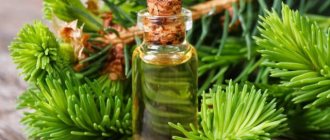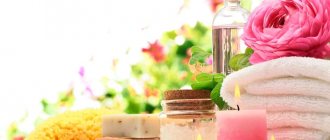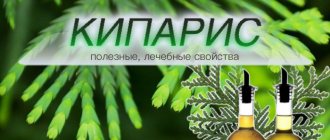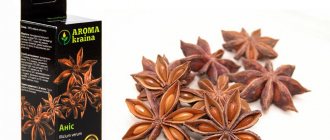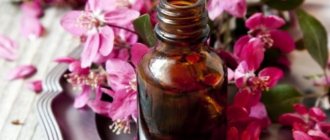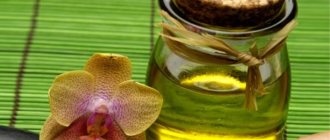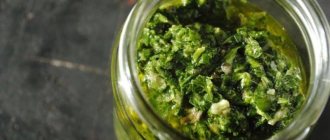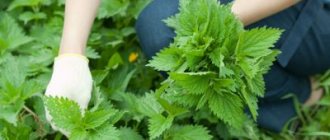Lavender essential oil is one of the most popular in the world. According to ancient manuscripts, its healing powers have been used for two and a half thousand years. The Romans and Egyptians used lavender extract for mummification, as a perfume and bath product, in cooking and for indoor fumigation.
Historians are convinced that the oil that the Virgin Mary, according to the Gospel of John, used to anoint Jesus was lavender. “Mary, taking a pound of pure precious ointment, anointed the feet of Jesus and wiped His feet with her hair; and the house was filled with the fragrance of the world" (John 12:3). All this makes you look at the usual product in a new way, doesn’t it?
Appearance
This evergreen silver-green subshrub, up to 80 or even 150 cm high, is widespread throughout the world - Australia, Asia (India, Arabia), Africa (northeastern part), and southern Europe. In Russia, it is often found in the Krasnodar region, Crimea, and the Caucasus. In mid-June, the tops of the stems are covered with white-purple flowers with a pronounced aroma.
Lavender subshrub
In the Nikitsky Botanical Garden, angustifolia lavender has been cultivated since the 18th century, but it was planted in the gardens of noble people already in the 13th century. Flowers were used to scent linen, fumigate rooms, and wash.
Chemical composition
Essential natural lavender oil is a colorless liquid, sometimes with a yellow-green tint and the smell of lavender. The following useful compounds have been identified in its composition:
- caryophyllene;
- lavandiol;
- acids (caproic, valeric, acetic, butyric);
- borneol;
- L-linalool alcohol esters.
The flowers of the plant are rich in coumarin, herniarin, ursolic acid, bitterness, resins, and tannin compounds.
Lavender oil combines well with other base and essential oils - this property is highly valued by doctors and perfumers.
Composition of lavender oil
Over the entire period of existence of lavender oil, this aromatic substance was obtained by various methods - from distillation using oils to enfleurage. But today it is obtained only from fresh flowers of the plant, mainly through water-steam distillation.
Lavender oil has a rather complex composition, which includes components such as alcohol esters (linalools), as well as acids:
- valerian;
- vinegar;
- nylon.
In addition to the listed components, the composition of lavender oil is enriched with the following beneficial substances:
- caryophyllene;
- lavandiol;
- geraniol;
- coumarin;
- borniol;
- herniarin, etc.
The auxiliary components are tannins, bitterness and resins.
Lavender essential oil: pharmacological properties
The medicinal capabilities of the plant are due to its rich chemical composition:
- stimulates the performance of the brain and heart, improves their blood supply;
- relaxes, relieves muscle spasms, treats neuroses, increased anxiety and insomnia;
- strengthens the immune system, eliminates chronic fatigue;
- disinfects the room, bed and linen;
- gets rid of moths and mosquitoes;
- helps normalize blood pressure in hypertensive patients;
- restores hormonal balance;
- accelerates scarring of wounds and burns;
- helps to concentrate, improves memorization;
- has antioxidant and regenerating properties;
- relieves wet cough during colds;
- improves the condition of the skin with eczema and psoriasis;
- rejuvenates facial skin, improves color, eliminates pigmentation;
- treats depression and headaches.
The bactericidal, adaptogenic, analgesic and antiseptic properties of lavender helped our ancestors not only treat colds, but also control the rate of spread of epidemics.
Benefits of lavender oil
The importance of such a popular remedy is difficult to overestimate; it’s easier to say for which organs and systems it is not useful. The most common areas of application of ether:
- colds - relieves runny nose and nasal congestion, facilitates the removal of phlegm when coughing, helps treat bronchitis;
- blood vessels – strengthens the walls of blood vessels, improves heart function;
- nervous system – improves sleep quality, treats neuroses and depression;
- Gastrointestinal organs – has choleretic and diuretic properties;
- skin – accelerates the healing of wounds and burns;
- hair – improves the condition of the scalp and hair growth;
- sweat glands – normalizes sweating, has a bactericidal effect.
The antiseptic properties of lavender are very important for women. For gynecological problems, the oil treats inflammation, reduces symptoms of pain and discomfort. Essential oil helps regulate the monthly cycle and hormonal levels, enhances libido.
Lavender oil was used in ancient times as a natural aphrodisiac, which is why today it is used as a mild stimulant for erectile dysfunction. The oil is also useful for men as a sedative – it restores calm and self-confidence.
The positive effect on the heart and blood vessels increases the length and quality of life, reducing the harm from poor nutrition and unhealthy lifestyle.
The extract is given to children with caution, especially at an early age. On the one hand, inhalations help treat colds and reduce nervous excitability. And yet, the oil should not be used for oral use (even in the absence of allergies) before 12 years of age.
Lavender essential oil - home use
You can purchase the product at any pharmacy; this is one of the most popular oils, because it is used not only in medicine. Cosmetologists add the extract to soap, eau de toilette, masks, scrubs, creams and other body and hair care cosmetics.
Lavender fragrance is used in the production of washing powder and other detergents. You can make your own detergent and disinfectant by adding a few drops of oil to water. The liquid can also be used as an air freshener.
Napkins soaked in lavender oil are placed in closets with linen and clothes to protect them from moths.
In folk medicine and in everyday life, the oil is used 2-3 drops with honey or jam for colds, aromatic medallions are made for fatigue (2-3 drops are enough) and compresses for inflammation (5 drops on a napkin for 15 minutes).
For good relaxation, you can add the extract to massage oil (5 drops of lavender per 10 drops of the base composition). For a five-minute inhalation for a cold, three drops are enough. The same amount can be added to the aroma lamp.
Product Feature
Lavender oil is an oily, almost transparent liquid with a characteristic spicy-fresh aroma. The product is currently obtained by steam distillation. This allows the production of high quality, concentrated oil.
The quality of the purchased product can be judged based on the place of its production. The most expensive product is considered to be one made in France. The second in quality and cost is the oil that was produced in England. The ether produced from lavender, which grows in Crimea and Australia, is considered to be of average quality and affordability.
In its pure form, this product can be used in very rare cases. It is especially valued because it goes well with base oils. Oil compositions fully reveal the properties of lavender ether.
Lavender in folk medicine
Herbalists use lavender extract to treat, first of all, colds. For this purpose, inhalations with oil are used. 3 drops of product per glass of water is enough. Comfortable temperature – 55° C, procedure duration – up to 5 minutes.
The oil also helps with migraine-type headaches caused by overwork. Here is the simplest recipe:
- You can make herbal tea by adding a couple of drops of lavender essential oil to a cup or take a relaxing bath for 15 minutes (6 drops of oil per bucket of water is enough). If you have a special lamp, you can arrange aromatherapy (3-5 drops per session).
If you are experiencing muscle pain, a massage with lavender oil will help to relax and restore joint mobility.
Add 3-6 drops to any massage base. Dermatitis, eczema, psoriasis, any skin damage is treated with a special remedy. For half a glass of chamomile tea, take a third of a glass of sage infusion. Add 10 drops of lavender oil to the mixture. Problem areas can be treated within a day. The medicine is left on the skin for 10 minutes, then washed off.
Inflammation due to thrush and other discomfort in the genital area can be relieved by douching with an infusion of chamomile and 3 drops of lavender oil.
You can also save yourself from insect bites by using lavender extract if you lubricate the bite site with a drop of oil on a cotton pad. Two days are enough to eliminate inflammation.
For sweaty feet, take baths with lavender and sage. For one procedure, it is enough to pour boiling water over 20 g of raw materials. After half an hour, strain the tea leaves and add oils: 5 ml of lavender and 3 ml of sage. Pour the mixture into a bowl of water and immerse your feet in it for 20 minutes. The procedure must be carried out every other day.
A twenty-minute bath with lavender (4-7 drops) will restore strength, rejuvenate the skin, and improve your mood. The water temperature should not exceed 40 degrees. You can immerse yourself for 20 minutes; the best time for the procedure is in the evening, when you can immediately go to bed after taking a bath.
Use for health problems
The unique aroma of lavender cannot be confused with anything else. But few people know what health benefits the plant has. Before World War I, people used it to disinfect wounds, and farmers wore it in their hats to prevent headaches.
People with sleeping or digestive problems have also found relief in the medicinal herb. But today, when modern medicine develops the production of chemical additives and drugs, the use of natural remedies is losing its relevance...
Digestive Issues Lavender is used as a natural digestive support by promoting intestinal motility. The oil from the plant also promotes the production of gastric juices and helps relieve digestive problems and stomach pain.
Relieving Anxiety and Anxiety One of the natural remedy's best known benefits is its calming and anticonvulsant effects. It is used to reduce anxiety and depressing feelings.
In 2012, the Journal of the Medical Association of Thailand published a study that found the ability to significantly reduce blood pressure and fever, and stabilize heart rate.
It is also known to have beneficial effects on depressed mood. Prepare a spray bottle with water and a few drops of aromatic product. Spray this mixture on your face and body throughout the day. Alternatively, you can rub 2-3 drops between your palms and inhale the aroma.
Article for you:
Cedar oil - medicinal properties and contraindications in cosmetology and folk medicine
Headache Natural medicine is used to prevent and relieve headaches, and is a good help for people suffering from migraines or other types of headaches.
Using the plant to prevent migraines has been shown to be more effective than a number of pharmaceutical drugs. This was shown in a 3-month study conducted among patients with recurrent migraine.
There are many possibilities for using a useful remedy to relieve and prevent headaches. You can use aroma lamps, baths, rubbing your temples...
Insomnia The herb has been used for hundreds of years to treat insomnia, restless leg syndrome and other sleep problems.
The oil is a natural sedative thanks to the phytochemical methanol. But be careful not to use other sedatives and hypnotics at the same time.
Mix 5-6 drops of lavender oil with 1/2 cup of distilled water. Apply this mixture to the bed linen (lightly, it should not be wet). You can pour the mixture into a spray bottle and use it as a night air freshener.
Fatigue Chronic fatigue is often caused by stress. Lavender helps relieve stress and anxiety, reducing their impact on the body. As a result, fatigue is reduced.
Sore muscles This beneficial plant has analgesic and anti-inflammatory properties. This helps with muscle pain. Mix a few drops each of lavender and castor (or coconut) oil and use to massage the affected areas.
Allergic rhinitis The plant contains natural antihistamines that reduce the body's reaction to seasonal allergens. This natural remedy will soothe dizziness, itching, sneezing and other allergy symptoms. Apply a small amount of oil to your forehead, chest and cheeks as needed.
Nosebleeds Nosebleeds are an unpleasant condition that often occurs in children and occurs without pain, but can be frightening.
Lavender is safe and helps stop bleeding by soothing the delicate nasal membranes. Soak a tissue or cotton swab in lavender oil and apply to your nose. Hold until the bleeding stops.
Nausea Nausea can be caused by several different factors, including stress, intestinal parasites, the flu, inner ear disorders, pregnancy, or chemotherapy. A natural remedy applied to the area behind the ears may provide relief. A homemade product can be placed on the tongue.
Tired Feet Don't have time to take a bath or just prefer a shower? If so, try a foot bath. It will relieve pain and relieve swelling. Mix 1/4 cup Epsom salts and 5-7 drops lavender oil in a bowl of pleasantly hot water. Soak your feet in it for half an hour.
Medicinal use
Aromatic oil should be in every home medicine cabinet, because this budget product is a worthy alternative to many medications.
- The product improves blood flow and gently reduces high blood pressure in hypertensive patients.
- Due to its diuretic effect, it is used to treat inflammation of the urinary system.
- Respiratory tract diseases (bronchitis, tonsillitis, laryngitis, cough) are treated with inhalations and massage of the cervicothoracic back.
- In cases of metabolic disorders, epigastric pain, and dyspeptic disorders, lavender will stimulate the functioning of the gastrointestinal tract.
- You can successfully fight wrinkles, acne, eczema, and psoriasis. The oil helps solve not only cosmetic problems - the skin recovers faster from burns, wounds, swelling, and irritation from insect bites.
- Most often, the extract is used to improve sleep quality in conditions of increased stress. For these purposes, you can take a bath with lavender or use an aroma lamp.
- The product is used as an analgesic for tension and inflammation of muscle tissue, sprains, lumbago, pain in the joints and back of various origins. Massage problem areas by adding lavender to the massage oil.
This product is one of the few that can be used on the skin in its pure form, but it is still worth conducting a sensitivity test first.
Methods of application
Aroma lamp
The device must be filled with warm water and added 4-7 drops of lavender oil (per 15 sq.m.). You can inhale the scented air for 1-2 hours. The nervous system is strengthened and psychological relaxation occurs.
Interesting: Nuances of choice: how to buy the right aroma lamp
Cold and hot inhalations
This is an excellent prevention of respiratory diseases, as well as direct assistance in their treatment. Inhalations are carried out for no more than 10-15 minutes with the addition of 3-7 drops of oil. It turns out to have a general strengthening, antimicrobial, expectorant effect.
Wooden aroma balls
A useful and beautiful accessory for your home or car. Due to the fact that wood perfectly absorbs oil and then slowly releases the aroma, you can create a fragrant atmosphere in the room for a long time.
You need to buy wooden balls (just interesting pieces of wood will do), put them in a preferably thick plastic bag and add a few drops of aromatic oil. Next, tie the bag and leave it overnight; by morning the oil will saturate the wood and it will change color. Voila - the aroma balls are ready!
Compresses
One of the most effective ways to use lavender essential oil. Both cold and warm compresses are applied. Cold ones are used for sunburn and festering wounds. Warm - for the treatment of rheumatism and pain relief. The dosage varies from 5 to 7 drops.
Baths
Aromatic baths with the addition of oil are usually done warm (water temperature 35-38 degrees). First add 5-10 drops of lavender essential oil to sea salt or milk. Such water procedures are useful for the excretory and nervous system. The whole body relaxes and its strength is restored.
Aromatic pendants
An aroma pendant is a beautiful and useful decoration that you can make at home yourself. The oil serves as a general tonic, and directly in case of illness as a remedy. Add 1-3 drops per day.
Massage
Lavender oil is used for body and face massage. 5-7 drops per 10 grams are usually added to the base. For frequent headaches or nasal congestion, massage the temporal region. A professional body massage improves muscle tone, and with the addition of oil it makes the procedure very pleasant. The body relaxes, filling it with strength and energy.
Lavender essential oil is a fairly strong aphrodisiac oil. Used as an aid in erotic massage for both men and women.
Shampoos, hair masks, shower gels, face creams and body lotions are enriched with lavender oil.
Contraindications
Lavender essential oil should be taken with caution. Although it is not an allergenic essential oil, it is better to test for sensitivity. It should not be used by pregnant women as it has a strong effect on hormones. Also use cautiously for people with low blood pressure. When treating with iron-containing, iodine-containing drugs, it is best not to use lavender oil. In addition, it is important not to buy fake oil.
Dosage
When using any essential oil, it is necessary to correctly calculate its dose. In order for the product to be used optimally and not cause any harm to the body, you must follow the following recommendations: 1. Aroma lamps: 5 - 10 drops per 20 square meters. 2. Hot inhalations: 3 - 5 drops, procedure time 3 - 8 minutes. 3. Cold inhalations: 5 - 7 drops, procedure time 5 - 15 minutes. 4. Baths: 5 - 10 drops. 5. Massage: 5 - 7 drops per 10 grams of the main product. 6. Enrichment of cosmetic preparations: 3 - 7 drops per 15 grams of base. 7. Compresses: 5 - 7 drops. 8. Aromatic pendants: 1 - 3 drops. 9. Douching: 3 - 5 drops applied to 0.5 teaspoon of soda or honey, diluted in 200 grams of warm boiled water. 10. Oral use: 1 - 2 drops with various additions (honey, lemon, jam, dried fruits) up to 2 times a day. You can drink it with tea, milk, kefir, but best of all with water.
Application of the extract in cosmetology
Lavender essential oil is well-deservedly popular among cosmetologists: its benefits for hair and nails, skin of the face and neck, and body have been proven.
For the neck
A woman’s age is often revealed not by her face, but by the most vulnerable area of her neck and décolleté. A mask of oil and honey will help improve skin turgor and color. For 2 tablespoons of honey, 2 drops are enough. The mask can be kept on the skin for 30 minutes. Wash off with cool water.
For body
Lavender extract eliminates stretch marks and cellulite, rejuvenates the skin, and tightens contours. For this purpose, baths and massage are used (5 drops of ether per 10 ml of base). For cellulite, wraps with lavender oil are useful.
Lavender extract eliminates stretch marks and cellulite.
For nails
If you rub a drop of oil into the nail plate for 10 minutes, you can get rid of split nails, soften the cuticles, strengthen your nails and add a healthy shine to them.
Hand baths with the addition of a spoonful of sea salt and 10 drops of lavender oil are also useful. For this procedure, 10 drops of oil are enough.
Lavender hair oil
The product is relevant for pediculosis, as it eliminates not only adult individuals, but also parasite eggs. For treatment, just drop a few drops of oil into shampoo.
It is also used for alopecia (local hair loss), the product prevents hair loss, stimulates growth, improving blood supply and nutrition of hair follicles.
For dry, itchy scalp, fungal and bacterial diseases, and dandruff, the oil works as an antiseptic, moisturizes and nourishes the skin. Pour some oil on your fingers and massage your scalp.
Apply a little product to your hair and comb well, distributing it evenly.
You can prepare a hair mask. Mix 2 tablespoons of burdock oil with 3 drops of lavender extract. Distribute the product throughout your hair, rubbing it into the skin in the root growth area. Cover with film and a towel for 40 minutes. The mask should be washed off with a mild natural shampoo and the procedure should be repeated twice a week.
Lavender oil for facial skin
Cosmetologists love lavender, so there are always hygiene products with its extract on sale.
The antioxidant properties of the plant help fight the signs of skin aging, increase skin turgor, improve color, and eliminate pigmentation. For this purpose, compresses with lavender oil are made in the morning and evening.
Those with dry skin will benefit from this mask: mix 2 tablespoons of olive oil with 2 drops of lavender. Apply to cleansed facial skin and rinse with plain water after 20 minutes.
You cannot apply the oil in its pure form without a base - you can get chemical burns.
Benefits of lavender oil for weight loss
First of all, baths, massages and wraps with the addition of lavender extract are used for this purpose. The diet menu can be diversified with a dessert made from a large spoon of honey and three drops of lavender oil. You can take it with sugar and dairy products for 15 days in a row.
You cannot use such an active product without a base.
Those who want to lose weight can use lavender essential oil both externally and internally.
Pregnancy and breastfeeding
Due to differing views on the use of natural remedies during pregnancy and breastfeeding, you should consult your doctor before using it during these periods! The risk of negative effects is determined by the product’s ability to influence hormonal levels.
Article for you:
Rose oil: properties and uses for skin, hair, nails and treatment
Pregnant women are often bothered by one common problem - thrush. To get rid of it, traditional medicine recommends using medicated tampons.
Mix the oils in the following concentration: 50 ml – sea buckthorn, 2 drops – lavender, 4 drops – tea tree. Soak a cotton swab in the mixture and insert it into the vagina overnight. Carry out the procedure 3 nights in a row. Take a break (2 nights). Repeat treatment if necessary.
Both during pregnancy and breastfeeding, aromatherapy has a good effect (in the absence of negative reactions in the form of nausea). It will ease toxicosis and calm the nerves. But such treatment should also be carried out after consultation with a doctor!
Contraindications for use
Judging by the reviews, lavender oil is safe for most people, but there has not been sufficient research on this issue, especially regarding the effect of the drug on pregnancy, as well as on the outcome of drug interactions.
Lavender-based products have one, but significant, contraindication: they cannot be used in parallel with iodine preparations, as well as chemotherapy.
Lavender oil cannot be used in parallel with iodine.
When undergoing a course of treatment with sedatives, lavender essential oil can enhance the calming effect and provoke lethargy and drowsiness. Similar recommendations apply to medications for acute respiratory infections and influenza. You should also not use lavender oil before surgery with anesthesia.
The oil is considered safe for children, with the exception of boys who have not gone through puberty - abuse of the product can affect hormonal levels.
In cases of slow heart rate, hypotension, gastritis with high acidity, gastrointestinal ulcers, epilepsy, pregnancy, the drug should be used with caution and only after consulting a doctor.
Its sedative capabilities and ability to change hormonal levels can negatively affect the course of pregnancy in the third trimester. If lethargy, drowsiness, loss of strength, allergic manifestations on the skin appear, treatment with lavender oil should be stopped and the symptoms reported to a specialist.
Pay attention to the quality of the product. This product is not from the cheap segment (from 100 rubles for 10 ml), if they offer it cheaper, there is a chance of getting a fake. The synthetic analogue may have overly sharp, sour and bitter notes. If in doubt, it is better to refrain from experimenting with health.
For babies
For children, a natural aromatic preparation is recommended as a skin care product (moisturizing, relieving irritation) and evening calm - in this case, a bath with lavender essential oil is advisable (add a few drops to the bath and bathe the child). Such a bath will relieve irritability, the baby will calm down and fall asleep faster.
Keep in mind that use for children is only possible after consulting a doctor due to the effect on hormonal levels!
How to make lavender oil at home
If you manage to stock up on enough raw materials, you can try to prepare the oil at home. Follow all the recommendations, and it will be no less useful. The cooking technology is simple:
- Pour any vegetable oil over the dried and crushed raw materials. It is better to take a glass jar for this purpose. The liquid level should be 1 cm above the grass.
- Close the container with a lid and leave in the sun for two days. Then leave to infuse in a dry, dark place.
- After 2 months, the tincture must be strained through cheesecloth and squeeze out the remainder. For additional purification, you can filter the liquid again. Place a funnel in the neck of the bottle and place cotton wool in it. It will serve as a filter.
It is better to keep this essential product in the refrigerator. When properly stored, it retains its healing properties for two years.
